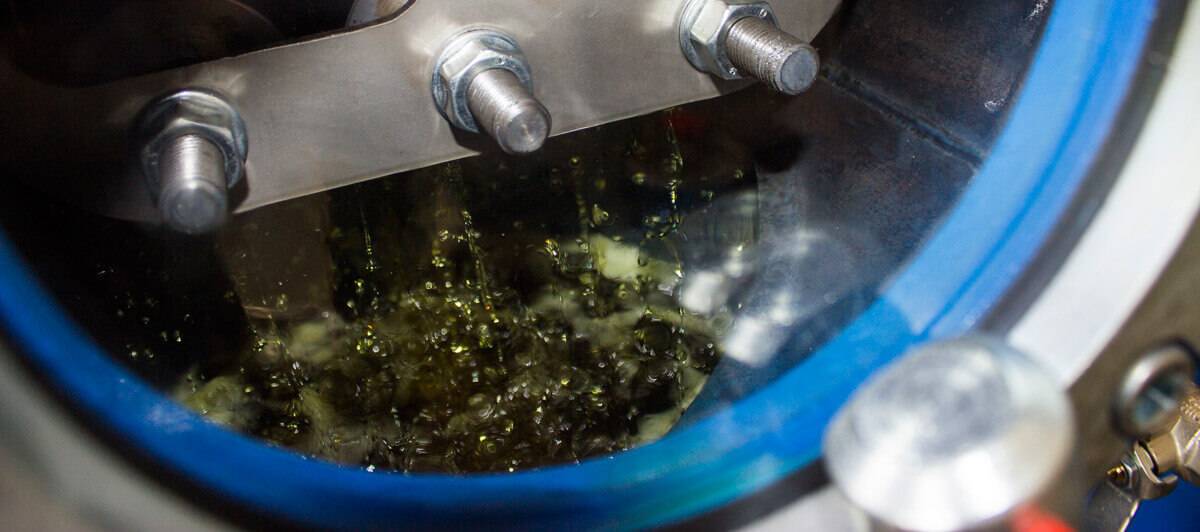Power distribution and supply systems rely on transformers, which convert voltage and amperage at the same frequency and at the same power. Reliable transformer operation depends on the condition of its insulation system, which consists of cellulose insulation and dielectric oil. Such oil is also used in other electrical equipment, such as switches, cables etc.
Transformer oil performs important functions (insulation, cooling protection of solid insulation from moisture etc), but can become aggressive to metal components made of steel, copper or silver. The culprits are corrosive sulfur and moisture.
Where does sulfur in transformer oil come from?
Initially, sulfur in transformer oil comes from the crude oil it is made from. There are vegetable based dielectric oil, however, most of insulating oils now are made of crude oil. There are three categories of crude oil in terms of sulfur content:
- sweet crude (less than 0.5% sulfur);
- sour crude (0.5 to 2% sulfur);
- high-sulfur crude (over 2% sulfur).
There are crude oils with as much as 14% sulfur. There are various processes for desulfurization of crude oil: alkaline treatment, hydrotreatment etc.
The content of sulfur in oil is significantly decreased by such processing. There are total sulfur and corrosive sulfur. Corrosive sulfur usually constitutes only a small part of the total amount of sulfur in the oil. Table 1 lists content of both types of sulfur in different samples of transformer oil.
Table1 ,mjb
|
Sample No |
Corrosive sulfur, % weight |
Total sulfur, % weight |
| 1 |
0.00030 |
0.50 |
| 2 |
0.00060 |
0.20 |
| 3 |
0.0005 |
0.09 |
| 4 |
0.00010 |
0.03 |
| 5 |
0.00020 |
0.90 |
The total sulfur content in modern transformer oil is rarely less than 0.2-0.4%. It should be noted that it is the corrosive compounds that are the most dangerous, and that under certain conditions, non-corrosive sulfur may become corrosive.
The impact of corrosive sulfur on electrical equipment
As was noted above, the corrosive sulfur causes metal corrosion. If the corrosion occurs in transformer oil, it results in organic acid soaps, which increase dielectric loss and accelerate oxidation. Sulfur organic compounds and increased temperatures also increase solubility of water in the oil.
If the equipment has movable contacts, the surface corrosion increases contact resistance, producing more heat. The contact with are operated rarely with long pauses when corrosion can progress are especially vulnerable.
Semiconducting metal sulfides (most often copper sulfide) can form sediment on transformer solid insulation, reducing the dielectric properties of paper. This may results in leak currents or short circuits. Similar problems are possible when copper sulfide precipitates on the surface of other insulation materials, such as ceramic or wood.
Methods of transformer oil desulfurization
There are two ways to reduce the negative impact of corrosive sulfur on transformer components. The first is to protect metal surfaces from corrosive sulfur compounds by coating them with special lacquer. This approach does not aim to remove sulfur and its compounds, but only to mitigate its effects. The second method is to remove the impurities. One way of transformer oil desulfurization involves the adsorptive properties of some metals, such as iron, nickel, zinc etc. The problem with this method is that it is difficult to perform on a working transformer. When the transformer is energized, the oil is hot and the process is reversed: the metal which has already adsorbed sulfur begins to desorb it. Metals can be used in oil storage tanks before the oil is used in electrical equipment. GlobeCore took a different approach, which allows to remove corrosive sulfur even from energized transformers.
The GlobeCore transformer oil desulfurization process
GlobeCore engineers have developed a solution to remove corrosive sulfur from transformer oil. Transformer oil desulfurization process itself is similar to oil regeneration, using a composite adsorbent mix. Each component of such adsorbent captures a certain spectrum of sulfuric substances, improving the efficiency of desulfurization.
The adsorbent mixture is loaded into special columns of the regeneration unit, which is then connected directly to a transformer. A closed loop is formed: oil passes through the adsorbent and goes back to the transformer. The process removes not only sulfuric compounds, but also other impurities (acids, oxidation products etc), restores the oil’s dielectric strength and chemical composition. Another important benefit of the GlobeCore process is the ability to reactivate the saturated absorbent inside the regeneration unit itself.
According to the ASTM 1275A/B standard, the corrosion activity of transformer oil is determined by analyzing a copper strip placed into the oil for 24 hours at 150°С. The color of the strip is then compared to a sample scale. each corresponding to a certain general scale indication:
- 1а and 1b (slight tarnish);
- 2a, 2b, 2c, 2d, and 2e (moderate tarnish);
- 3а and 3b (dark tarnish);
- 4a, 4b and 4c (corrosion).
The GlobeCore process can efficiently remove sulfur from transformer oil from 4b and 4c to as low as 3а. The combination of regular regeneration and corrosive transformer oil desulfurization is an excellent alternative to replacing oil and also extends transformer service life.



